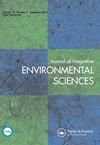长江流域农业绿色发展面临的挑战与对策
IF 3.5
4区 环境科学与生态学
Q3 ENVIRONMENTAL SCIENCES
Journal of Integrative Environmental Sciences
Pub Date : 2021-01-01
DOI:10.1080/1943815X.2021.1883674
引用次数: 13
摘要
长江流域被公认为中国的重点战略发展区域之一。长江三角洲地区的农业生产系统为中国实现粮食安全目标作出了重大贡献。实现农业绿色发展,就是建立高生产率、高资源利用效率、低环境成本的农业生产体系。然而,在长江三角洲地区实现农业可持续发展仍然存在挑战和障碍。在此,我们总结了YRB中AGD面临的四个主要挑战,并确定了两种方法(自上而下和自下而上),包括实现AGD所需的主要战略。这四大挑战包括但不限于:(1)农业生产力和养分利用效率低下;(2)农业生产结构不平衡;(3)城市化快速发展;(4)环境保护与粮食生产目标不协调。我们的结论是,在YRB中实现AGD需要自上而下和自下而上的方法。自上而下的方法主要是政府主导,以研究为支撑,通过空间规划促进农业生产与生态环境的平衡,优化谷物和经济作物生产与单粮和反刍动物生产的比例。自下而上的方法需要缩小各种种植和畜牧系统的产量差距,提高资源利用效率以控制环境影响的战略。此外,还需要进行培训和教育,以提高农民和顾问的认识和技能。我们的审查可以为全球其他地区从不可持续的农业生产向环境清洁和经济健康的可持续发展过渡提供借鉴。本文章由计算机程序翻译,如有差异,请以英文原文为准。
Challenges and strategies for agricultural green development in the Yangtze River Basin
ABSTRACT The Yangtze River Basin (YRB) has been recognized as one of the key strategic development regions in China. Agriculture p52 roduction systems in the YRB have contributed considerably to China’s goal of food security. Realizing Agriculture Green Development (AGD) means agriculture production systems with high productivity, high resource use efficiency and low environmental costs. However, challenges and barriers still exist for realizing AGD in the YRB. Here, we summarize four main challenges for AGD in the YRB, and identify two approaches (top-down and bottom-up) including main strategies needed to achieve AGD. The four challenges include, but are not limited to, (1) low agricultural productivity and nutrient use efficiencies, (2) an uneven agricultural production structure, (3) rapid urbanization, and (4) uncoordinated targets for environmental protection and food production. We conclude that both top-down and bottom-up approaches are needed to deliver AGD in the YRB. Top-down approaches are mainly operated by government and underpinned by research, which uses spatial planning to promote the balance between agricultural production and the ecological environment, and to optimize the proportions of cereal and cash crop production with monogastric and ruminant animal production. The bottom-up approach needs strategies to close the yield gap of various cropping and livestock systems, improve resource use efficiencies to control environmental impacts. Furthermore, training and education are needed to increase awarenessand improve skills for farmers and advisers. Our review can serve as example for other global regions that are in transition from unsustainable agriculture production towards sustainable withclean environment and healthy economies.
求助全文
通过发布文献求助,成功后即可免费获取论文全文。
去求助
来源期刊

Journal of Integrative Environmental Sciences
ENVIRONMENTAL SCIENCES-
CiteScore
3.90
自引率
0.00%
发文量
13
审稿时长
>12 weeks
期刊介绍:
Journal of Integrative Environmental Sciences (JIES) provides a stimulating, informative and critical forum for intellectual debate on significant environmental issues. It brings together perspectives from a wide range of disciplines and methodologies in both the social and natural sciences in an effort to develop integrative knowledge about the processes responsible for environmental change. The Journal is especially concerned with the relationships between science, society and policy and one of its key aims is to advance understanding of the theory and practice of sustainable development.
 求助内容:
求助内容: 应助结果提醒方式:
应助结果提醒方式:


